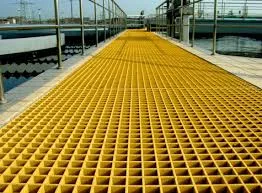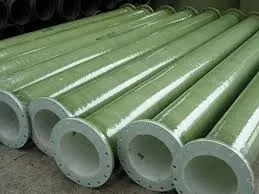
-
 Afrikaans
Afrikaans -
 Albanian
Albanian -
 Amharic
Amharic -
 Arabic
Arabic -
 Armenian
Armenian -
 Azerbaijani
Azerbaijani -
 Basque
Basque -
 Belarusian
Belarusian -
 Bengali
Bengali -
 Bosnian
Bosnian -
 Bulgarian
Bulgarian -
 Catalan
Catalan -
 Cebuano
Cebuano -
 China
China -
 China (Taiwan)
China (Taiwan) -
 Corsican
Corsican -
 Croatian
Croatian -
 Czech
Czech -
 Danish
Danish -
 Dutch
Dutch -
 English
English -
 Esperanto
Esperanto -
 Estonian
Estonian -
 Finnish
Finnish -
 French
French -
 Frisian
Frisian -
 Galician
Galician -
 Georgian
Georgian -
 German
German -
 Greek
Greek -
 Gujarati
Gujarati -
 Haitian Creole
Haitian Creole -
 hausa
hausa -
 hawaiian
hawaiian -
 Hebrew
Hebrew -
 Hindi
Hindi -
 Miao
Miao -
 Hungarian
Hungarian -
 Icelandic
Icelandic -
 igbo
igbo -
 Indonesian
Indonesian -
 irish
irish -
 Italian
Italian -
 Japanese
Japanese -
 Javanese
Javanese -
 Kannada
Kannada -
 kazakh
kazakh -
 Khmer
Khmer -
 Rwandese
Rwandese -
 Korean
Korean -
 Kurdish
Kurdish -
 Kyrgyz
Kyrgyz -
 Lao
Lao -
 Latin
Latin -
 Latvian
Latvian -
 Lithuanian
Lithuanian -
 Luxembourgish
Luxembourgish -
 Macedonian
Macedonian -
 Malgashi
Malgashi -
 Malay
Malay -
 Malayalam
Malayalam -
 Maltese
Maltese -
 Maori
Maori -
 Marathi
Marathi -
 Mongolian
Mongolian -
 Myanmar
Myanmar -
 Nepali
Nepali -
 Norwegian
Norwegian -
 Norwegian
Norwegian -
 Occitan
Occitan -
 Pashto
Pashto -
 Persian
Persian -
 Polish
Polish -
 Portuguese
Portuguese -
 Punjabi
Punjabi -
 Romanian
Romanian -
 Russian
Russian -
 Samoan
Samoan -
 Scottish Gaelic
Scottish Gaelic -
 Serbian
Serbian -
 Sesotho
Sesotho -
 Shona
Shona -
 Sindhi
Sindhi -
 Sinhala
Sinhala -
 Slovak
Slovak -
 Slovenian
Slovenian -
 Somali
Somali -
 Spanish
Spanish -
 Sundanese
Sundanese -
 Swahili
Swahili -
 Swedish
Swedish -
 Tagalog
Tagalog -
 Tajik
Tajik -
 Tamil
Tamil -
 Tatar
Tatar -
 Telugu
Telugu -
 Thai
Thai -
 Turkish
Turkish -
 Turkmen
Turkmen -
 Ukrainian
Ukrainian -
 Urdu
Urdu -
 Uighur
Uighur -
 Uzbek
Uzbek -
 Vietnamese
Vietnamese -
 Welsh
Welsh -
 Bantu
Bantu -
 Yiddish
Yiddish -
 Yoruba
Yoruba -
 Zulu
Zulu
Feb . 16, 2025 05:24
Back to list
fiberglass floor grating
Fiberglass floor grating has emerged as a staple in various industrial and commercial environments, thanks to its unmatched versatility and durability. Its growing prominence in applications where safety and longevity are paramount is not a stroke of luck but the result of superior engineering and material science. This construction material brings to the table a unique set of properties, making it ideal for environments that demand resilience and sustainability.
From an environmental perspective, fiberglass floor grating is a sustainable choice. Manufacturing processes have evolved to minimize environmental impact, with many manufacturers prioritizing eco-friendly practices and the use of recyclable materials. This commitment not only appeals to environmentally conscious businesses but also aligns with global initiatives aimed at reducing industrial carbon footprints. When it comes to customization, fiberglass flooring grating doesn’t disappoint. The material is available in a variety of thicknesses, mesh patterns, and colors, offering businesses the flexibility to tailor the product to meet specific aesthetic and functional requirements. Advanced manufacturing techniques also allow for custom resin formulations, which can be adjusted to enhance specific properties like fire retardance or UV resistance, further broadening its application scope. As businesses continue to seek out materials that balance cost, safety, and environmental responsibility, fiberglass floor grating stands out as an optimal choice. Its blend of durability, safety features, and low maintenance requirements ensures that it not only meets but exceeds the standards expected in contemporary industrial applications. Embracing fiberglass grating is not merely a choice for today but a strategic investment for the future.


From an environmental perspective, fiberglass floor grating is a sustainable choice. Manufacturing processes have evolved to minimize environmental impact, with many manufacturers prioritizing eco-friendly practices and the use of recyclable materials. This commitment not only appeals to environmentally conscious businesses but also aligns with global initiatives aimed at reducing industrial carbon footprints. When it comes to customization, fiberglass flooring grating doesn’t disappoint. The material is available in a variety of thicknesses, mesh patterns, and colors, offering businesses the flexibility to tailor the product to meet specific aesthetic and functional requirements. Advanced manufacturing techniques also allow for custom resin formulations, which can be adjusted to enhance specific properties like fire retardance or UV resistance, further broadening its application scope. As businesses continue to seek out materials that balance cost, safety, and environmental responsibility, fiberglass floor grating stands out as an optimal choice. Its blend of durability, safety features, and low maintenance requirements ensures that it not only meets but exceeds the standards expected in contemporary industrial applications. Embracing fiberglass grating is not merely a choice for today but a strategic investment for the future.
Next:
Related Products









